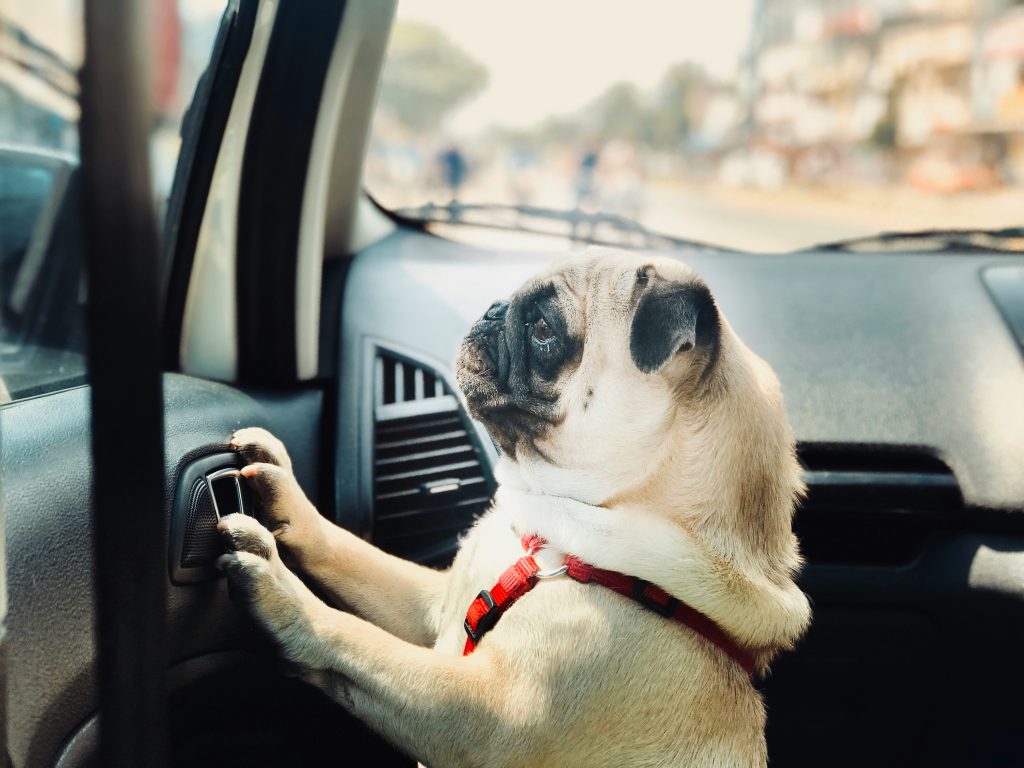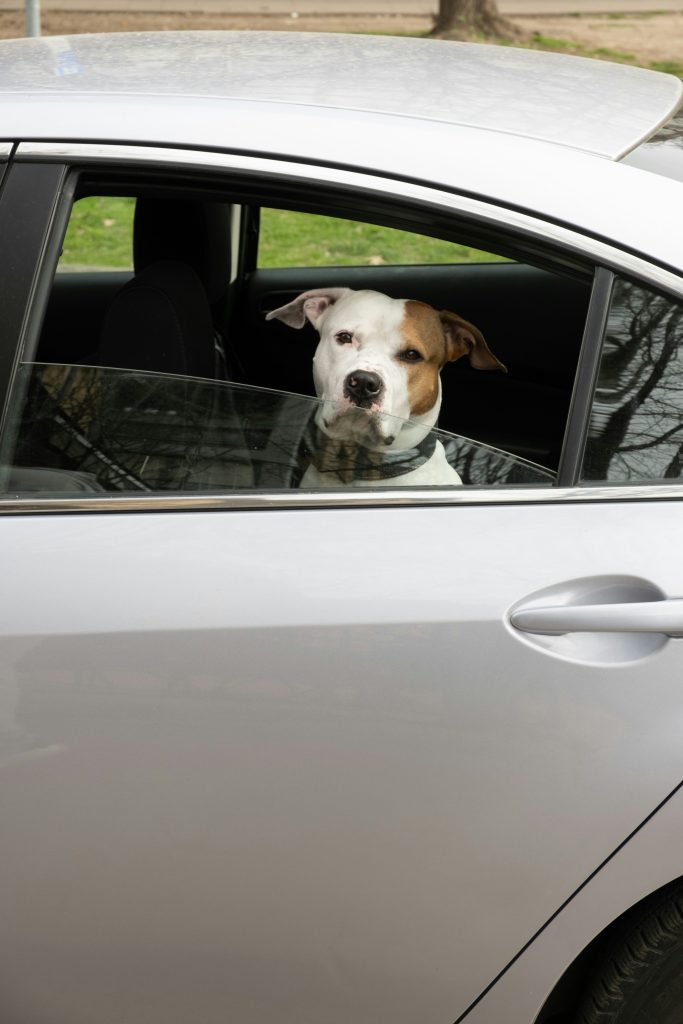
For many dogs, the car can feel like a strange, noisy, and stressful place. But with the right setup—and a little crate training—it can become a safe haven, a cozy spot they associate with security and calm. Whether you’re heading across town or cross-country, crate training in the car isn’t just about convenience—it’s about safety, comfort, and helping your pup feel at ease on every ride.
In this guide, we’ll cover why crate training in the car is so effective, how to do it step by step, and how to troubleshoot common challenges along the way. Let’s turn your car into a mobile comfort zone for your dog!
Why Crate Training in the Car Works So Well
Dogs are den animals by nature. A crate provides a small, enclosed space where they can relax without feeling overstimulated. In the car, it adds a layer of:
- Security: Prevents your dog from moving around or jumping unexpectedly
- Stability: Reduces anxiety by giving them a familiar, confined area
- Safety: Minimizes the risk of injury during stops or accidents
- Focus: Helps your dog settle down instead of barking at passing cars or pedestrians
When done right, crate training transforms the car from a source of stress into a predictable, peaceful space.
Step-by-Step Guide to Car Crate Training
Step 1: Choose the Right Crate for Travel
Not all crates are made equal when it comes to cars. Look for:
- Crash-tested crates: Made specifically for car safety (brands like Gunner, Impact, or Variocage)
- Proper ventilation: Ensure your dog gets enough air flow
- Correct size: Your dog should be able to stand, turn around, and lie down comfortably
- Secure fit: Crate should be strapped or anchored to prevent sliding
Soft-sided crates are fine for calm dogs on short trips, but hard-sided or aluminum crates are safest for longer or high-speed drives.
Step 2: Introduce the Crate at Home First
Don’t put a dog who’s never used a crate directly into one for a road trip. Start at home where they feel comfortable:
- Leave the crate open in a quiet area of the house
- Toss in high-value treats, chews, or favorite toys
- Feed meals inside the crate to create positive associations
- Gradually increase the time your dog spends inside with the door closed
Keep it low pressure and rewarding—this isn’t a punishment zone, it’s a retreat.
Step 3: Move the Crate to the Car
Once your dog is comfortable entering and relaxing in the crate at home, place the crate in the car while it’s parked. Let them explore it:
- Sit in the car with them while they’re inside
- Offer treats through the crate door
- Keep the sessions short—just 5–10 minutes at first
- Don’t start the engine until they seem calm and content
You can even bring in their favorite blanket or something with your scent to increase familiarity.
Step 4: Take Practice Rides
When your dog is relaxed in the crate with the car off, it’s time to go for a short drive:
- Start with a 3–5-minute trip around the block
- Stay calm and speak soothingly if needed
- Gradually extend the trip time over several days or weeks
- Always end with something rewarding: a walk, a treat, or playtime
Avoid high-stress destinations like the vet during training phases—keep every ride low-stakes and enjoyable.
Step 5: Establish a Routine
Dogs love routines. If you consistently crate them before every ride, they’ll start associating the crate—and the car—with predictability.
- Use a cue like “crate up” before each trip
- Offer a special chew or treat they only get in the car
- Create a relaxing pre-ride ritual: potty break, drink, light play, then crate
This routine will signal to your dog that good things follow crate time.

Tips to Make the Crate More Comfortable
- Use soft bedding, but nothing that can be shredded and ingested
- Avoid overheating: Never place the crate in direct sunlight or without air circulation
- Provide entertainment: A safe chew, treat-dispensing toy, or frozen Kong can help
- Keep it familiar: Use the same crate or bedding your dog uses at home
If your dog is nervous, covering the crate with a light sheet or towel (leaving ventilation space) can help block out overstimulation.
Troubleshooting Common Crate Challenges in the Car
Problem: Dog Won’t Enter the Crate in the Car
- Go back to home crate training
- Reward any approach to the crate
- Never force them in—build trust slowly
Problem: Whining or Barking in the Crate
- Ensure they’ve had enough exercise and potty time beforehand
- Try calming aids (Adaptil spray, calming chews)
- Gradually build up time and praise quiet moments
Problem: Dog Tries to Escape
- Make sure the crate is secure and sized correctly
- Distract with a chew toy or frozen treat
- Use calming music or a white noise machine
If anxiety is extreme, consult a behaviorist or vet to rule out underlying issues.
Travel Safety Tips with a Crated Dog
- Never leave your dog unattended in a hot or cold vehicle
- Check on them frequently during long trips—look for signs of overheating or stress
- Bring water and a travel bowl for hydration at stops
- Always leash your dog before opening the crate door in case they bolt
Keeping safety top of mind ensures every trip is as smooth as it is safe.
The Mental Health Benefits of a Travel Crate
Beyond safety and convenience, the crate can provide a massive boost in emotional stability for anxious dogs:
- Reduces exposure to visual triggers
- Provides a consistent scent environment
- Acts as a coping tool during stressful transitions (like hotel rooms or new places)
For rescue dogs or dogs with reactivity issues, the crate becomes more than a box—it’s a haven.
What About Multi-Dog Homes?
If you’re traveling with more than one dog, each should have their own crate or secure travel space. This prevents fights, overcrowding, and tension—especially during long hours in the car.
Stackable or side-by-side crates (with airflow) can help save space while keeping each dog secure and comfortable.
Conclusion: Crate = Confidence on the Road
When used correctly, a crate can turn your car into a mobile comfort zone for your dog. Instead of stress, they associate rides with relaxation. Instead of pacing and whining, they learn to settle and sleep.
Crate training takes time, consistency, and compassion—but once your dog feels safe and secure, every journey becomes easier, calmer, and more joyful for both of you.
Whether you’re heading to the vet, visiting friends, or going on a grand adventure, a crate-trained pup is always road trip ready.
